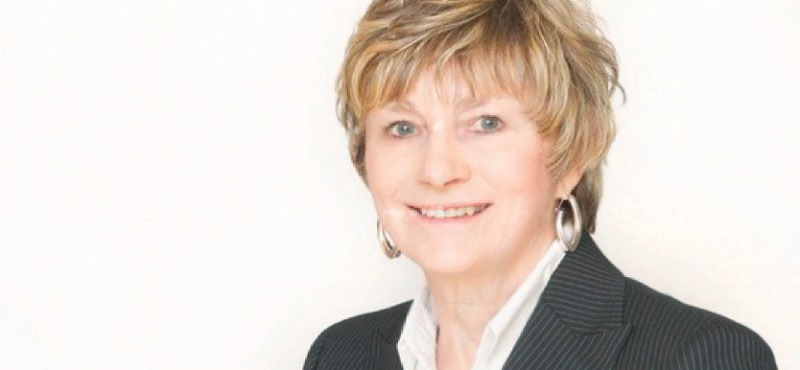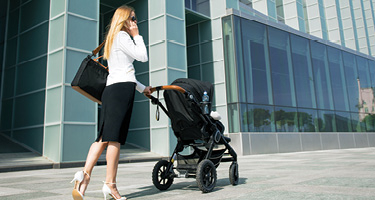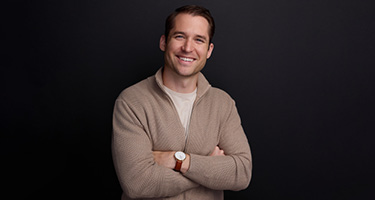More than 250,000 Americans die each year as the result of preventable medical errors, according to a 2016 study by Johns Hopkins University. Such errors are now the third-leading cause of death in the U.S., after heart disease and cancer. Yet the Association of American Medical Colleges notes that only about 17,000 medical-malpractice claims are filed annually.
Medical malpractice is a form of negligence in which errors, omissions, incorrect or delayed diagnoses, and often systematic breakdowns cause patient injuries or death. Injured patients and/or the families of deceased patients bring civil lawsuits to obtain compensation for both economic losses, such as future medical expenses, and noneconomic losses, such as pain and suffering resulting from their injuries.
As the numbers indicate, average Americans endure hundreds of thousands of such cases every year. Women, in particular, are at high risk of being victims of medical malpractice and device-related negligence.
Reasons range from gender bias in the health-care system to the ways in which patients with conditions specific to women are diagnosed and treated to device manufacturers pushing unsafe products on the market.
By shedding light on these fixable issues and biases within our health-care system’s current procedures, tools, and practices, medical-malpractice investigations and lawsuits can make the system safer for all patients.
The Implicit Gender Bias in Health Care
Most of us want to believe gender bias doesn’t exist in medical care, which is all about improving health and keeping people alive and healthy. However, when it comes to receiving adequate treatment, proper medications, and even timely and correct diagnoses of illness, studies suggest that women frequently get treated differently—often worse—than men.
According to a 2015 study conducted by the Public Library of Science, women are more likely to wait longer than men for a diagnosis. The PLOS study found a statistically significant wait time for women between the onset of symptoms and a diagnosis for six out of 11 types of cancer. A discussion following the study data highlights “the fact that symptoms should not be overlooked by the health-care professionals based on patients’ gender only.”
"They identified the characteristics that made a patient vulnerable to such a misdiagnosis. One was having a prior diagnosis of a psychiatric disorder. Another was being a woman"
Articles and studies also suggest that when a woman's presenting complaint is unspecific pain, the complaint is often attributed to mental illness. University of Maryland academics Diane Hoffman and Anita Tarzian shed light on this in their famous 2001 study, “The Girl Who Cried Pain,” noting that “female chronic-pain patients were more likely to be diagnosed with histrionic disorder (excessive emotionality and attention-seeking behavior) compared to male chronic-pain patients.”
This is not a new phenomenon. In the 1990s, Social Science & Medicine published an article that found “depression may be misdiagnosed in 30 to 50 percent of female patients.” Going even further back, in 1986, researchers for American Family Physician studied patients with organic neurological disorders who had initially been diagnosed with hysteria. As author and editor Maya Dusenbery wrote, “They identified the characteristics that made a patient vulnerable to such a misdiagnosis. One was having a prior diagnosis of a psychiatric disorder. Another was being a woman.”
There are consequences to this gender bias. As the Social Science & Medicine article noted, “The adverse consequences of incorrect diagnoses range from unnecessary expenditures of a woman’s resources to potentially life-threatening medical conditions.”
Medical Treatment Specific to Pregnancy, Breast and Cervical Conditions
Pregnancy-Related Medical Errors
Maternal mortality and morbidity remains inexcusably high in the United States. A 2018 report from the Commonwealth Fund notes that among 11 high-income countries, American women have the greatest risk of dying from pregnancy complications.
According to the Illinois Department of Public Health, from 2008 to 2016, each year an average of 73 Illinois women died within one year of pregnancy. Of those deaths, 72 percent were considered preventable by review committees.
Regardless of where they happen, these incidences need to be brought to light in order to educate others and advance change. Consider the following cases handled by Clifford Law Offices from 2013 through 2019:
- In 2013, Clifford Law Offices represented the husband of Karen Lopez, who died in childbirth from bleeding after a hospital and two doctors failed to diagnose a placenta accreta. Clifford Law Offices obtained a $15.55 million verdict.
- In 2019, the firm obtained an $8.5 million settlement on behalf of a woman who died from massive bleeding due to the hospital’s failure to diagnose a placental abruption and have blood products ordered and available.
- In 2019, Clifford Law obtained a record $101 million on behalf of now 5-year-old Gerald Sallis, who suffered permanent brain damage when his external fetal monitoring strips were ignored by the hospital for six hours before his birth.
These families’ willingness to pursue the poor care and neglect suffered by their mothers, daughters, and children is truly heroic. In addition to compensating the families for their economic loss and providing resources for their future needs, shedding light on the systematic breakdowns within each of the health-care systems increased the likelihood that those tragic errors would not happen to other mothers, daughters, and children.
Finally, an element that cannot be overlooked in a discussion of medical-malpractice cases involving pregnancy is racial disparity. As the IDPH noted in its report, “racism, including systematic racism and provider bias, negatively affects the quality of health care.”
In its most recent study on maternal mortality, the U.S. Centers for Disease Control found that from 2011 to 2016 in the United States, black non-Hispanic women suffered 42.4 deaths per 100,000 live births versus 13.0 deaths per 100,000 live births for white non-Hispanic women. The CDC noted that among the maternal deaths surveyed, “variability in the risk of death by race/ethnicity indicated that more can be done to understand and reduce pregnancy-related deaths.”
"The U.S. Centers for Disease Control found that from 2011 to 2016 in the United States, black non-Hispanic women suffered 42.4 deaths per 100,000 live births versus 13.0 deaths per 100,000 live births for white non-Hispanic women."
Delayed Diagnosis of Breast Cancer
Meanwhile, the CDC notes that cancer is the second-leading cause of death in the United States, with breast cancer the second-most common cancer among women. Yet treatment remains inadequate.
A U.S. News report found that roughly 13 percent of conventional mammogram screenings in the United States inaccurately diagnose breast cancer, leading to both false positives and false negatives. In false positives, screen tests can suggest a mass in the breast that leads to additional procedures, such as diagnostic mammograms, breast MRIs, and breast biopsies. Any one of these processes comes with its own set of risks and complications, such as infection. In the case of over-diagnosis, in which a patient is treated for a mass that may not ever develop into full-fledged cancer, a patient may have to undergo unnecessary radiation therapy or chemotherapy. All of these additional processes can lead to increased physical and mental suffering on the part of the patient.
False negatives entail a mammogram suggesting a patient has no reason to worry about cancer when something, in fact, requires further investigation or treatment. In cases of false negatives, a doctor may tell the patient to come back in six months or a year—during which time the cancer could significantly advance, leading to more intensive treatment or even death.
Misinterpretation of Pap Smears in Cervical Cancer
Roughly 4,290 women die from cervical cancer in the United States each year, according to the American Cancer Society. “Medical-care workers are dedicated, caring people, but they’re human. And human beings make mistakes,” Chris Jerry, the founder of the Emily Jerry Foundation, told CNBC in 2018. The foundation specifically advocates for better training and safety protocols concerning medications, but the work it has done since its inception in 2008 has highlighted the need across the medical system for backup procedures and safeguards when it comes to dealing with human error in medical settings.
Unsafe Devices and Medications
Ensuring quality and safety when one enters the realm of drugs and medical devices is a major problem because for years corporations have sacrificed patient well-being for profits. The market for female-specific health products has long been a multibillion-dollar industry—one in which corporations often rush products to market with little consideration for their effectiveness or safety.
Women are especially susceptible to this practice, because, as the American Association for Justice points out, they have “suffered disproportionately from the effects of dangerous and defective drugs” throughout modern history.
The market for female-specific health products has been a multibillion-dollar industry—one in which corporations often rush products to market with little consideration for their effectiveness or safety.
A case in point is the NuvaRing, a birth-control implant that was approved by the FDA in 2001. Since that time, studies have revealed the risk of NuvaRing users developing serious blood clots, which are linked to pulmonary embolisms, blood clots in the lungs that are often fatal. In 2014, NuvaRing agreed to pay $100 million in product-liability lawsuits claiming the device caused blood clots that in some instances led to fatal heart attacks. Nonetheless, the NuvaRing is still on the market.
Two birth control pills, Yasmin and Yaz, have also been linked to blood clots, as well as other serious side effects like high blood pressure and gallbladder disease. According to the American Association for Justice, by 2013, more than 100 women who had used the pills died and another 13,000 had suffered injuries.
In one notable case, Clifford Law Offices represented Mariola Zapalski and her husband, Rafal, against a doctor who had prescribed the pill Yasmin to Mariola. She suffered a debilitating stroke 13 days after starting the medication. Though Clifford Law obtained a $14 million verdict for the couple, Mariola’s condition—she is now wheelchair-bound and requires around-the-clock care—will not change. Both Yasmin and Yaz remain on the market.
The Cost of Limiting Access to Justice
Despite the proven regulatory benefit of the medical legal system, large health-care corporations often argue that medical-malpractice claims are responsible for higher insurance rates and overall health-care costs. This argument has been categorically debunked by a through examination of the data following Texas’ passage of sweeping lawsuit restrictions called HB4 in 2003, which capped non-economic damages to $250,000 in cases brought against individual physicians. In a 2019 law and economic research paper issued by The University of Texas School of Law, authors reported there was no evidence that the restrictive legislation reduced health care spending or costs. Texas was among the higher spending states per capita before the lawsuit restrictions and remains among the higher spending states today. Additionally, “relative to control states, which did not adopt caps, patient safety declined and physicians paid more premium dollars relative to payouts.” Most significantly, “using standard patient safety measures, we find evidence that hospitals made more avoidable errors after the adoption of HB4.”
Caps on non-economic damages disproportionately prevent attorneys from investigating and filing cases on behalf of injured or deceased women. Data from a 2013 Emory University School of Law study found that “95 percent of medical malpractice victims will find it extremely difficult to find legal representation” unless their cases meet certain economic criteria. If only economic damages are recoverable, those who don’t earn large salaries—stay-at-home mothers, children, and the elderly—are often the least likely to find an attorney and the most likely to be negatively affected by these caps on recovery.
It is undisputable that women still do the majority of unpaid work at home and within their families. Therefore, when women—specifically new or stay-at-home-mothers—are injured or killed due to medical errors, laws which deny them their right to compensation for noneconomic damages denies them access to justice and significantly restricts the amount of money their families can recover for their devastating loss.
The legal system holds doctors, hospitals, health-care systems, and drug companies accountable when they fail to provide proper care and safety for their patients. Malpractice cases bring to light dangerous defects in the health-care system and give victims a voice they would not otherwise have. Legislation that places barriers or caps on recovery for women who are victims of medical negligence disproportionally denies them access to justice. Medical negligence lawsuits are a key part of the path towards women’s health equality and patient safety.
Sarah F. King is a partner at Clifford Law Offices, Her litigation work has been highlighted by significant achievements of justice on behalf of injured women and children. Most recently, Sarah obtained a record $101 million verdict on behalf of a baby boy who was brain damaged at birth, She is dedicated to creating opportunities for women in law through education and community service. She was named one of Crain's Custom Media's Most Influential Women in Law in Chicago.

































